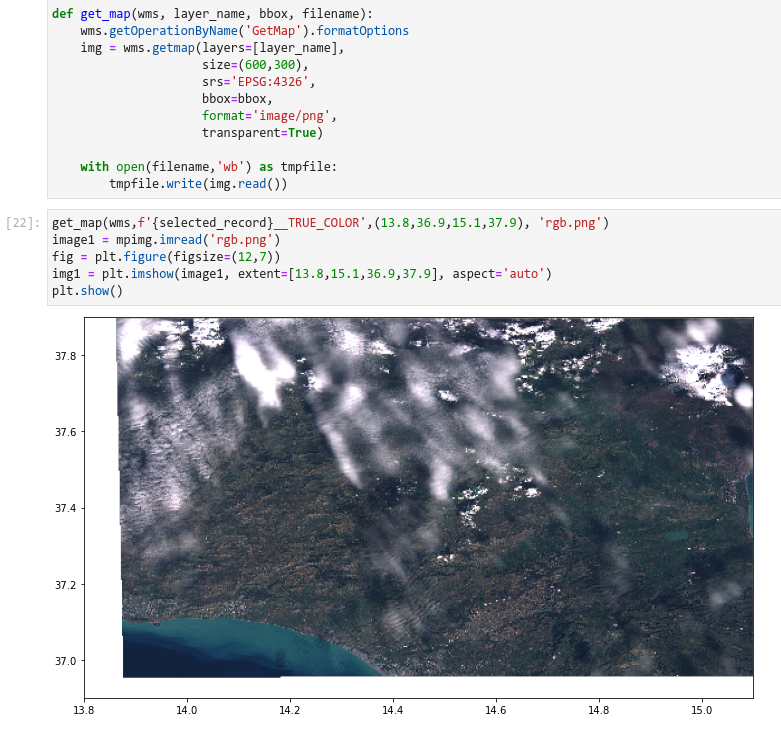Exploitation Platform Common Architecture (EOEPCA) is an open community project sponsored by European Space Agency.
In this first public demonstration of the software in development, the team will show how various building blocks of software release 0.3 have been integrated in the cloud, to support a basic use case.
Using EOEPCA tooling and a well-known python notebook client, we will demonstrate:
- Develop and publish an Application Package
- Platform data discovery and visualisation
- Application discovery, deployment and execution
- Results management and visualisation
- User identity and access management
A typical exploitation platform would integrate these services via dedicated web portal. For the demonstration we will make use of the Jupyter environment, which supports low-level interactive access to the various web services, combined with rich libraries for processing and visualising datasets, as in the screen shot below.

Agenda
- Overview (15 mins)
- Demonstration (30 mins)
- User Management Presentation (10 mins)
- Processing Presentation (10 mins)
- Resource Management Presentation (10 mins)
- Q&A (15+ mins)
The meeting details are below. No prior registration is required. If you’re thinking of attending (or would but not on this occasion) please let us know by sending an email to eoepca.SystemTeam@telespazio.com.
Topic: EOEPCA Demonstration 2021
Tuesday, 25 May 2021 10:30 CEST
Event number: 163 684 6465
Event password: EoEpCa2505
Meeting Link: https://esait.webex.com/esait/onstage/g.php?MTID=ee0c5092dc87b63e9659200f9bb0664ef
Attendees will be able to ask questions via the chat.
Discuss this topic before or after the event in our Forum
Update after the event
Thanks to more than 50 attendees for joining the live demonstration.
- The Webex recording (1 hour 45 minutes) is now available.
Presentation slides:
The consolidated demonstration follows an end-to-end scenario, using a combination of browser-based tooling and Jupyter notebook. The scenario covers…
User Alice (app developer)
- Development/testing and publishing of an application (Normalized Hot Spot Indices for lava flows) using the PDE. The output of this activity is a docker image (in DockerHub) and Application Package CWL (in S3)
User Eric (app user)
- Login to the platform
- Browse and discovery of data in the demo platform using the Resource Management tooling and endpoints (e.g. OpenSearch, WMS). Includes use of QGIS to interrogate the platform’s standard endpoints
- Identify data as input for processing – S2 data over Etna April 2021
- Interrogate the API Processes endpoint of the ADES
- Deploy Alice’s application package to the ADES
- Inspect the deployed app to verify deployment
- Initiate app execution using the previously discovered input data
- Monitor app execution (ADES job status)
- Results staged-out to S3 within the platform and registered in the User’s Workspace
- Visualise and access the results through the Workspace services (OpenSearch, WMS, WMTS, WCS, DS-EO)
- Interrogate the results through the Workspace services using QGIS
Users Eric and Alice
- Demonstrate Eric authorising Alice with access to the deployed application.
